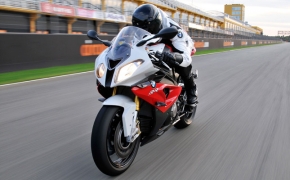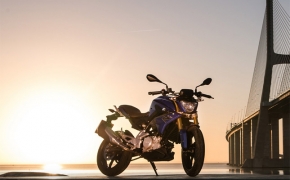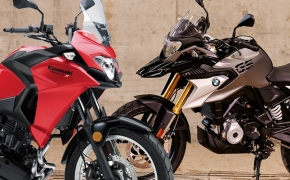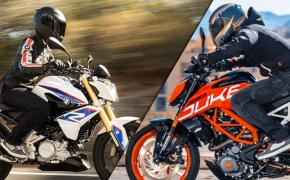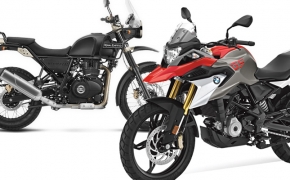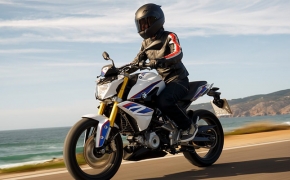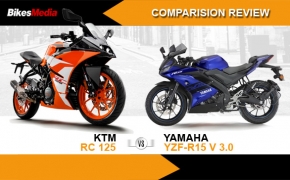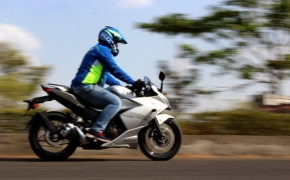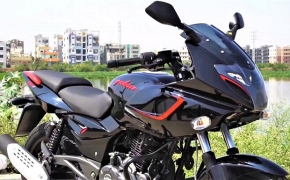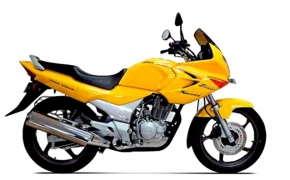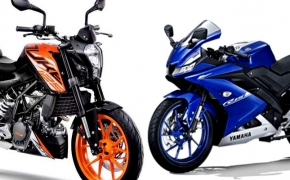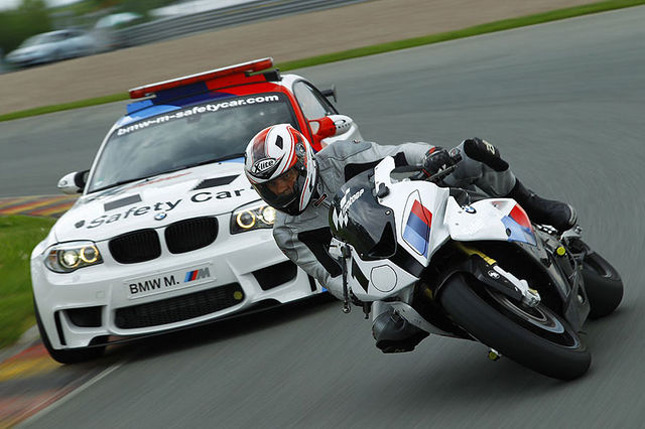 An engine is a finely tuned instrument. There are umpteen number of design variables to play with – valve size, Bore and Stroke, design of intake and exhaust manifolds, materials used, to name a few. The Inline 4 format is the most popular one on cars. Also, it is used widely on Superbikes.
An engine is a finely tuned instrument. There are umpteen number of design variables to play with – valve size, Bore and Stroke, design of intake and exhaust manifolds, materials used, to name a few. The Inline 4 format is the most popular one on cars. Also, it is used widely on Superbikes.A superbike, then, is something which offers rocket like thrills while looking drool worthy on the go at a fraction of the price of a supercar.
Bore and Stroke
Bore is the diameter of the circular chambers cut into the cylinder block. Stroke is the distance than the piston travels in one movement from TDC to BDC or vice versa. The greater is the Bore and Stroke, the greater is the displacement of an engine. So, theoretically there are an infinite number of Bore and Stroke combinations through which a given displacement can be achieved. Not understood?
Imagine a glass of water. You can store 150 ml of water in a wide and short glass as well as a long and thin glass right? Same with engine design (Here ml and cc is the same thing).
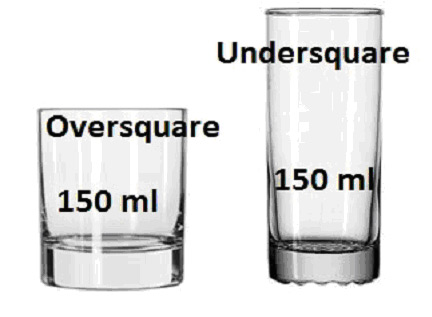 I wouldn`t go into formulae and all to calculate engine displacement but the following would suffice for now.
I wouldn`t go into formulae and all to calculate engine displacement but the following would suffice for now.* Bore to Stroke ratio > 1, Oversquare engine (Honda CBR 150R, KTM 390 Duke).
* Bore to Stroke ratio = 1, Square engine (Yamaha R15)
* Bore to Stroke ratio < 1, Undersquare engine (Most models of Royal Enfield)
Oversquare engines are typically high revving units. Undersquare are lower revving compared to the Oversquare format. Below are the technical specs of the Honda CBR1000RR, for reference.
* Bore to Stroke ratio = 1, Square engine (Yamaha R15)
* Bore to Stroke ratio < 1, Undersquare engine (Most models of Royal Enfield)
 Generally, the oversquare engines are used in applications where power and speed are more important, as in superbikes. Whereas undersquare engines are used where torque and pulling power are given preference over outright speed. Square engines offer the best of both worlds. Your average family car uses an undersquare engine as driveability and torque is more important than acceleration and top speed.
Generally, the oversquare engines are used in applications where power and speed are more important, as in superbikes. Whereas undersquare engines are used where torque and pulling power are given preference over outright speed. Square engines offer the best of both worlds. Your average family car uses an undersquare engine as driveability and torque is more important than acceleration and top speed.Power & Torque
As superbikes mainly use the Oversquare engine layout, they make more power. Bigger bores promote better breathing and promote better airflow. Also, big bore allow larger valves to be used, which improves efficiency. However this is just one of the reasons for their explosive performance. Read on to know further. Cars mostly use the undersquare one so they make more torque.
By design, undersquare engines produce more torque. Torque is the force acting on an object which causes it to rotate. As this design has a long connecting rod, so it has a longer torque arm to produce more torque, as compared to big bore engines. You can refer to our detailed article "Difference Between Power & Torque- Which Is Better?".
Firing Order
Ever wondered why V8 engines, although very similar looking, are so different in nature and sound? V8s are so popular that you`ve seen them and heard them on so many cars. Right from a typical V8 American muscle burble in the 1967 Ford Mustang to the modern day exhaust note of a Ferrari F430 ! And of course, they sound so different ! The reason is because there are 12 different firing order combinations available for an 8 cylinder engine !
Firing order is the sequence of combustion in each cylinder. The order in which each cylinder fires makes a world of difference to the available traction and performance of the vehicle. Superbikes use custom built crankshafts with different firing orders that help in achieving optimum power delivery and firing intervals, hence the performance. For a 4 cylinder engine the following firing orders are available :
1-3-4-2
1-2-4-3
1-3-2-4
1-4-3-2
Firing order affects the NVH (Noise, Vibration, Harshness) levels of an engine, and of course, the sound ! So, depending on the engine application, any 1 of these will be employed. The firing order of a daily driven car and a superbike may well be different.
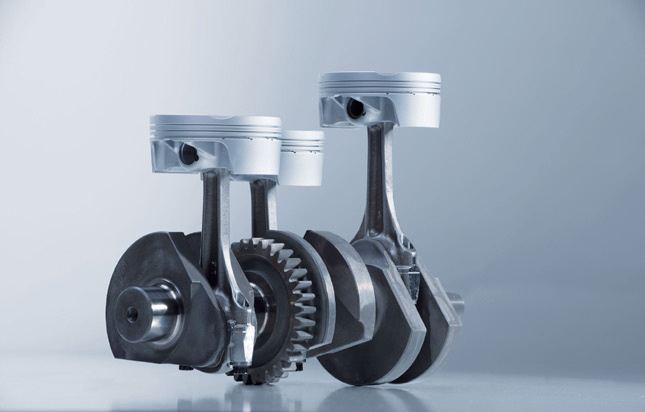 Compression Ratio
Compression RatioSuperbike engines, as you know, typically run on higher octane fuels compared to a regular car engine. This is because they use higher Compression ratios, by design. They are not built to run on lower Octane fuels. Higher compressions engines have tremendous pressure inside the combustion chamber. So, if low Octane fuel is used then it will pre – ignite and may cause a lot of serious problems.
Materials (valves, pistons, conrods, cams)
The devil is in the details. This couldn`t have been more true when designing and selecting materials for an engine. Superbike engines, as they have to be built for outright performance use exotic materials. At higher RPMs, the main enemy is heat transfer. So, these engines use smart composite materials to improve cooling and heat transfer, apart from the regular liquid cooling systems. Materials like aluminium alloys are used, which are plated with Chrome – Nickel Silicon coatings to reduce friction, which is very high, specially at high RPMs. Apart from this, Iridium spark plugs have to be used along with expensive and sophisticated Fuel Injection systems. These materials have to be light in weight, strong and good conductors of heat.
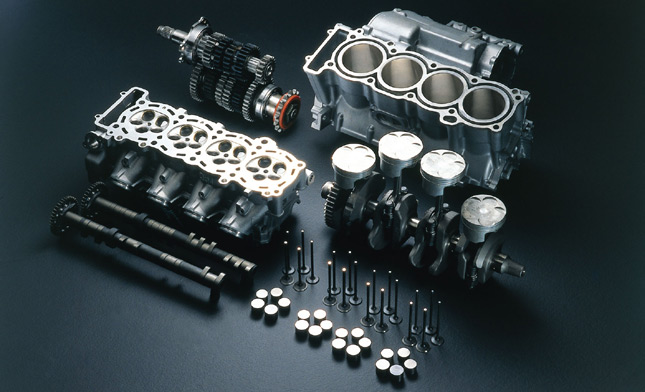 Car engines use heavier materials for the pistons, connecting rods and the like, which is great for maintaining good cruising speeds. In addition they have heavier flywheels which means, once a given speed is attained, it will be easier to maintain that speed, thus reducing power requirement and hence, fuel consumption. But, as you may have guessed, the throttle response is compromised a fair bit. Unlike the knife – edge response of a superbike.
Car engines use heavier materials for the pistons, connecting rods and the like, which is great for maintaining good cruising speeds. In addition they have heavier flywheels which means, once a given speed is attained, it will be easier to maintain that speed, thus reducing power requirement and hence, fuel consumption. But, as you may have guessed, the throttle response is compromised a fair bit. Unlike the knife – edge response of a superbike.All in all, inline 4 car engines and inline 4 bike engines have very different purposes to serve. Superbikes are at the superlative end of performance while your every day car is built for mileage, fuel efficiency and daily usability, while offering pretty decent performance, which it holds up to very well. Superbikes are a platform for the manufacturer to showcase all of it`s latest technologies on the motorcycle, which is why, they say, this superbike battle will never end. So, they really cannot be compared. Who cares, as long as things remain fun and safe!
By: Vikram Malhotra












